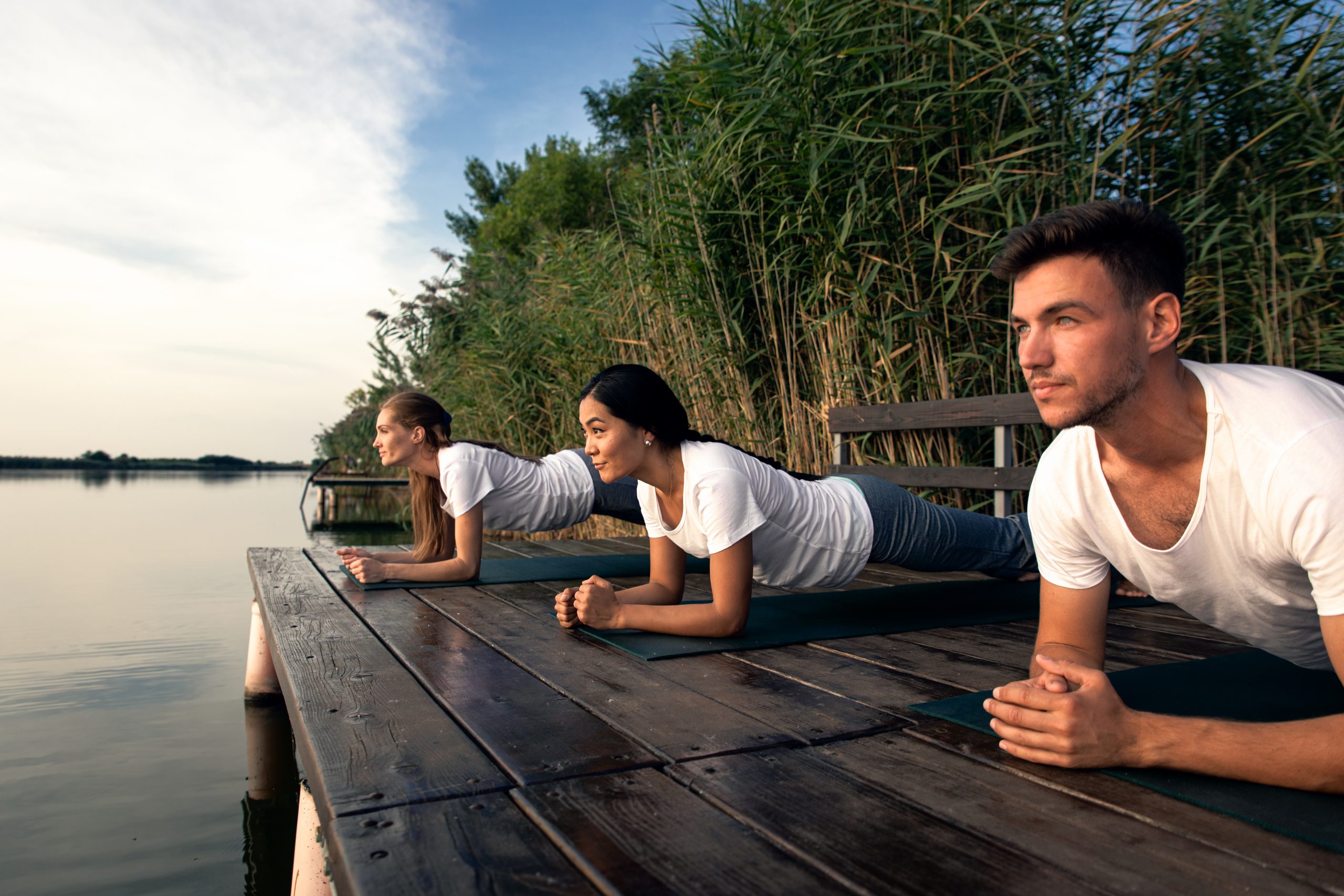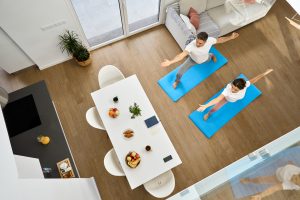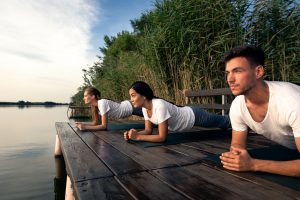Ever thrown your back out from lifting an overflowing laundry hamper or lost your balance while attempting to put on sneakers standing up? If you want to prevent one or both incidents from happening again (or ever), try functional training! Read on to learn about this practical way to get active, including why it’s so great and functional training exercises you can do almost anywhere.
What is functional training?
Originally used to rehabilitate injured athletes, functional training is a type of strength training consisting of exercises that mimic everyday movements like standing up, lifting, carrying, reaching, climbing stairs, bending down and twisting. Unlike traditional strength training, which isolates certain muscles and muscle groups, functional training focuses on compound exercises that work multiple muscle groups and joints at a time.
The best part about it? Like calisthenics exercises, many functional training exercises – such as squats, walking lunges, planks, push-ups and step-ups – don’t require equipment!
6 benefits of functional training
1. It can make your regular physical tasks easier: After a few functional training sessions, you may find it less challenging to carry groceries, climb stairs, garden, walk your dog or even get up from your chair or couch after watching your favourite show.
2. It can prevent surprise injuries: Functional training strengthens the muscles you actually use for day-to-day tasks, making you less likely to pull or strain them. If you practice picking up heavy objects like dumbbells from the floor during a functional training session, you can prevent future injuries from lifting bags of groceries, for example.
3. It can boost your overall fitness: Studies show that functional training can significantly improve your speed, muscle strength, power, balance and agility. So, whether you’re sprinting to catch the bus or taking out the trash, you’re covered!
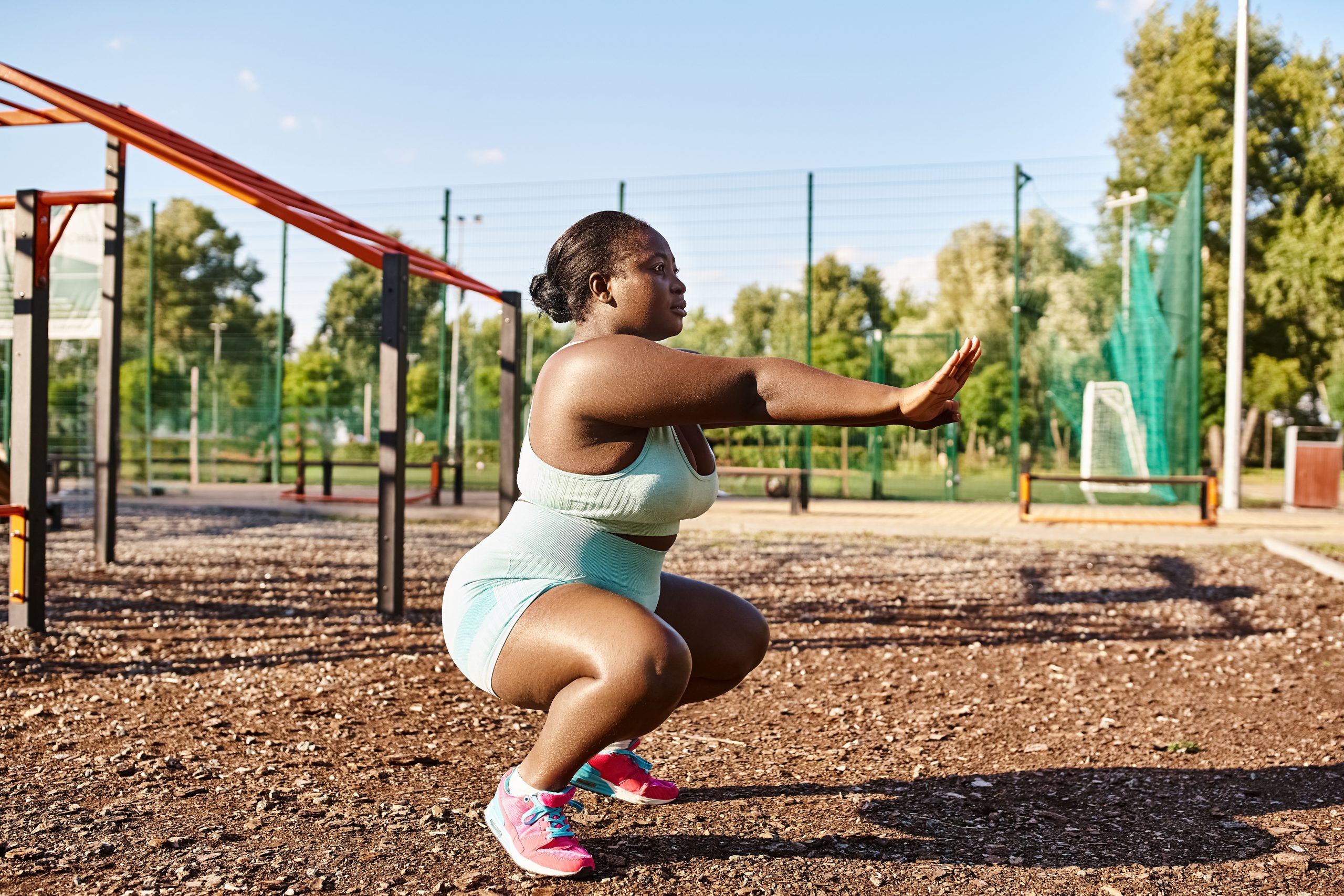
5. It can improve your core strength and posture: Many functional training exercises such as planks work and strengthen your core muscles, supporting good posture.
6. It can prevent muscle loss: Research shows that functional training helps prevent age-related muscle loss and late-life disability in older adults, so it can keep you moving independently well into your golden years.
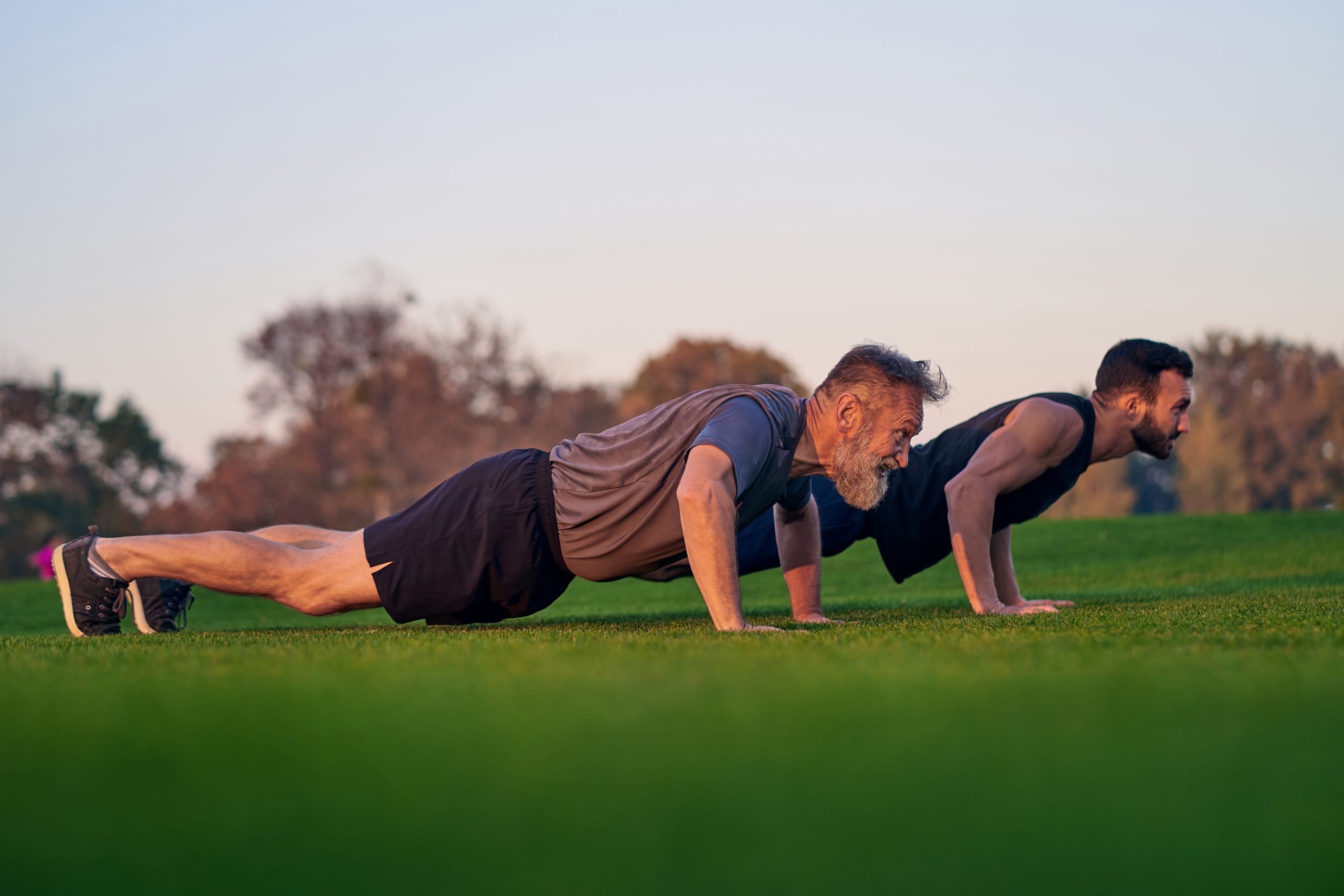
Functional training workouts to try
Now that you know about functional training and its many perks, ready to give it a go? To help you get started, follow along with our functional training workout video or try the exercises described below:
1. Squat/Sit-to-Stand:
Sit on the front of a stable chair and keep your toes back underneath your knees with your feet hip-distance apart. Lean forward slightly to bring your nose over your toes. Using your leg strength and while keeping your arms extended, lift yourself up into a standing position.
With your arms raised and using your lower body to resist gravity, slowly lower yourself back down. If you need a little more support, use your arms to push off the chair or your knees, but if you’re feeling confident, try performing the exercise without chair support!
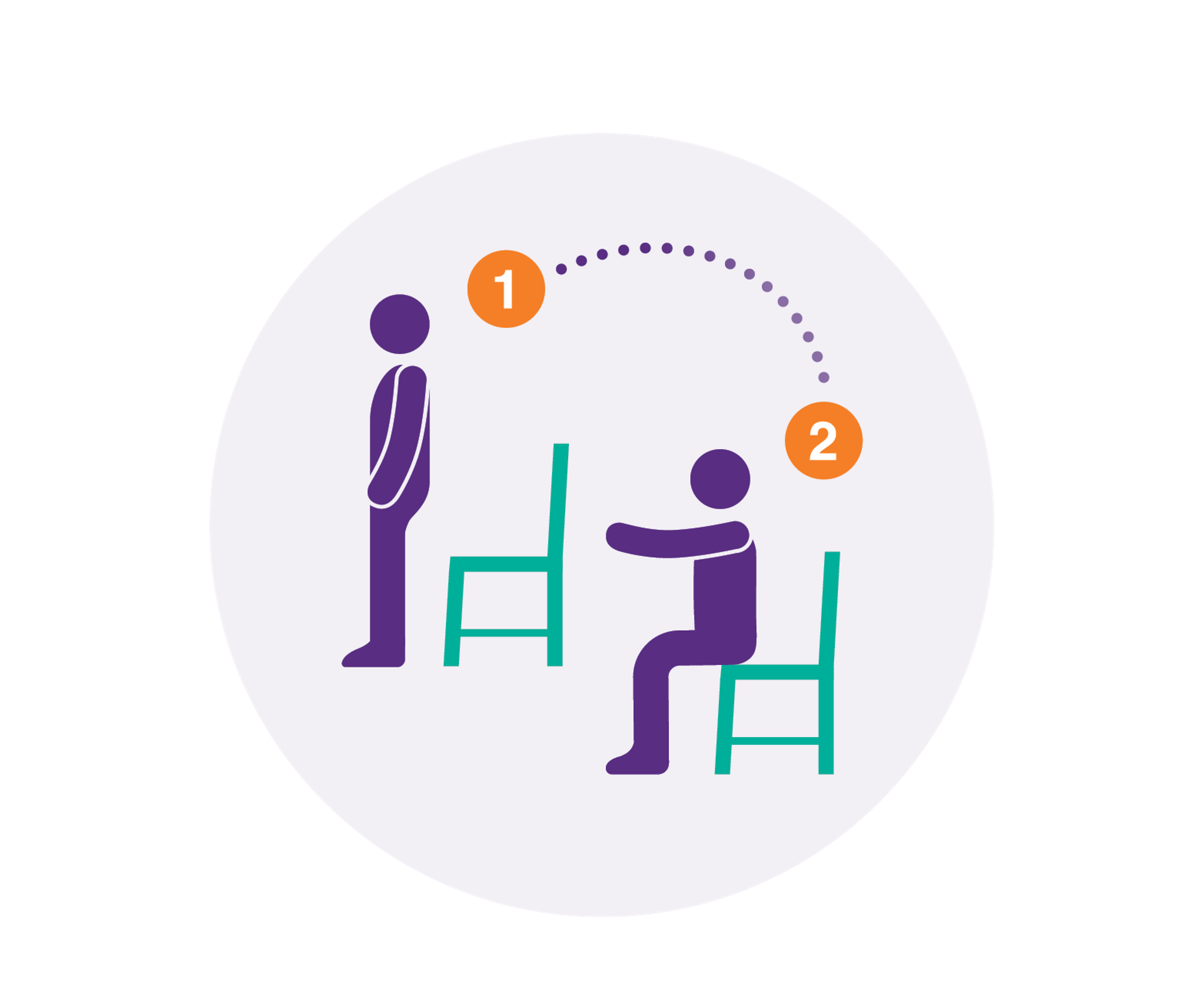
2. Walking lunge
Stand with your feet hip-width apart. Take a step forward with your right foot, then slowly bend both of your knees until your back knee is just above the floor.
Stand back up, take a step forward with your left foot and bend both knees until your back knee is just above the floor. Continue down the hallway until you reach the washroom or kitchen.

3. Elbow plank
Begin by lying on your stomach with your feet shoulder-width apart and forearms placed on the ground. Ensure that your elbows are directly under your shoulders, keeping your head in a neutral position.
Next, draw in your abs toward your spine and contract your glutes. From this position, lift your torso off the floor from your knees, keeping your back straight. The goal is to keep your neck and spine in a neutral posture so that it feels like there’s a long line running from the crown of your head all the way to your knees/toes. Hold this position for as long as you can – it’s better to hold it for a short time with proper posture than to push yourself with incorrect posture.
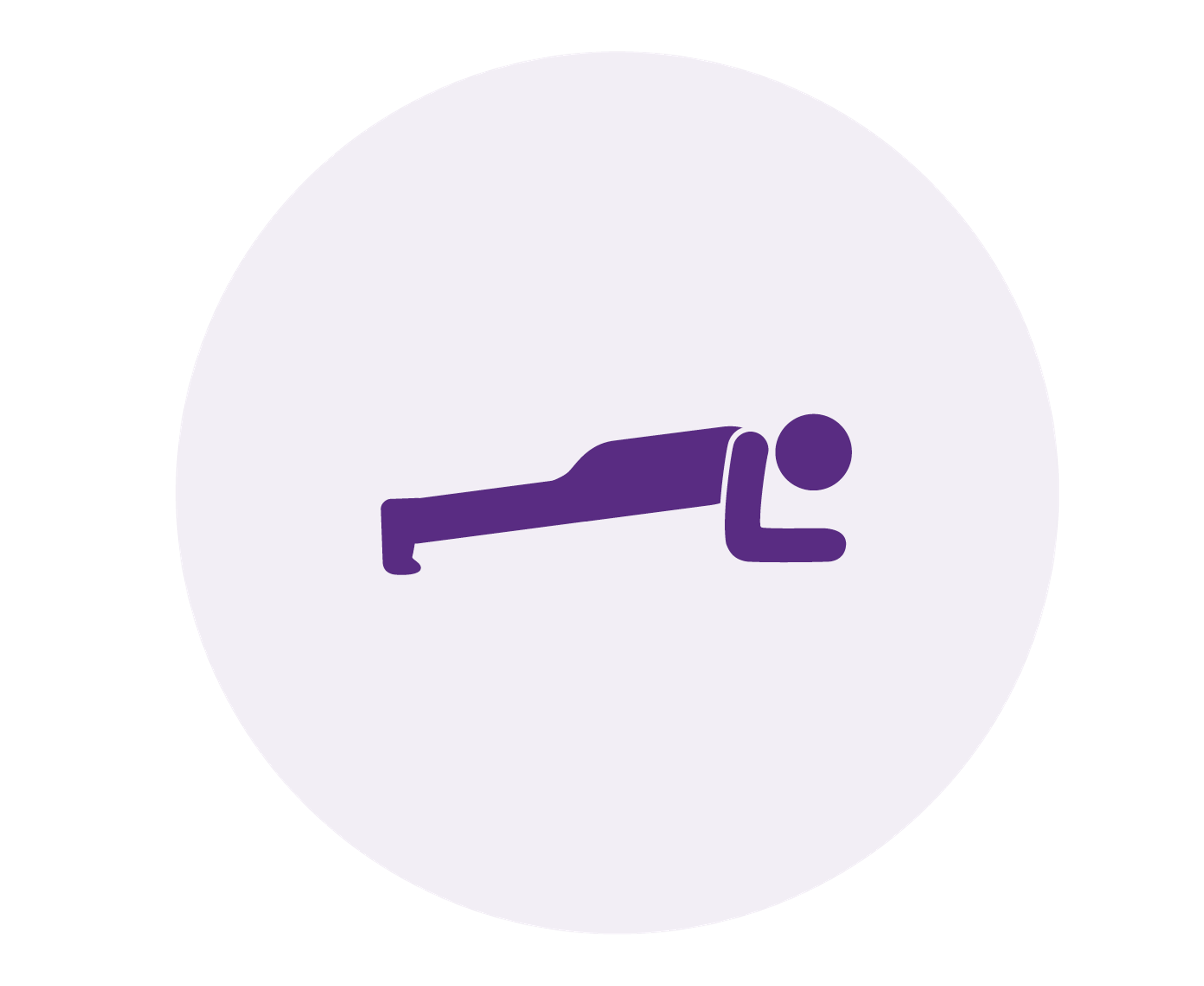
4. Step-up
Stand tall while facing a sturdy step, box or bench that’s roughly knee height. Keep your feet hip-width apart and your arms relaxed at your sides. Place your right foot firmly on the step, box or bench, and press through your heel to lift your body. Bring your left foot up to meet your right so that you’re standing fully on the step, box or bench. Step back down with your left foot, followed by your right, and return to the starting position. You can complete all reps on one leg before switching or alternate legs with each step.
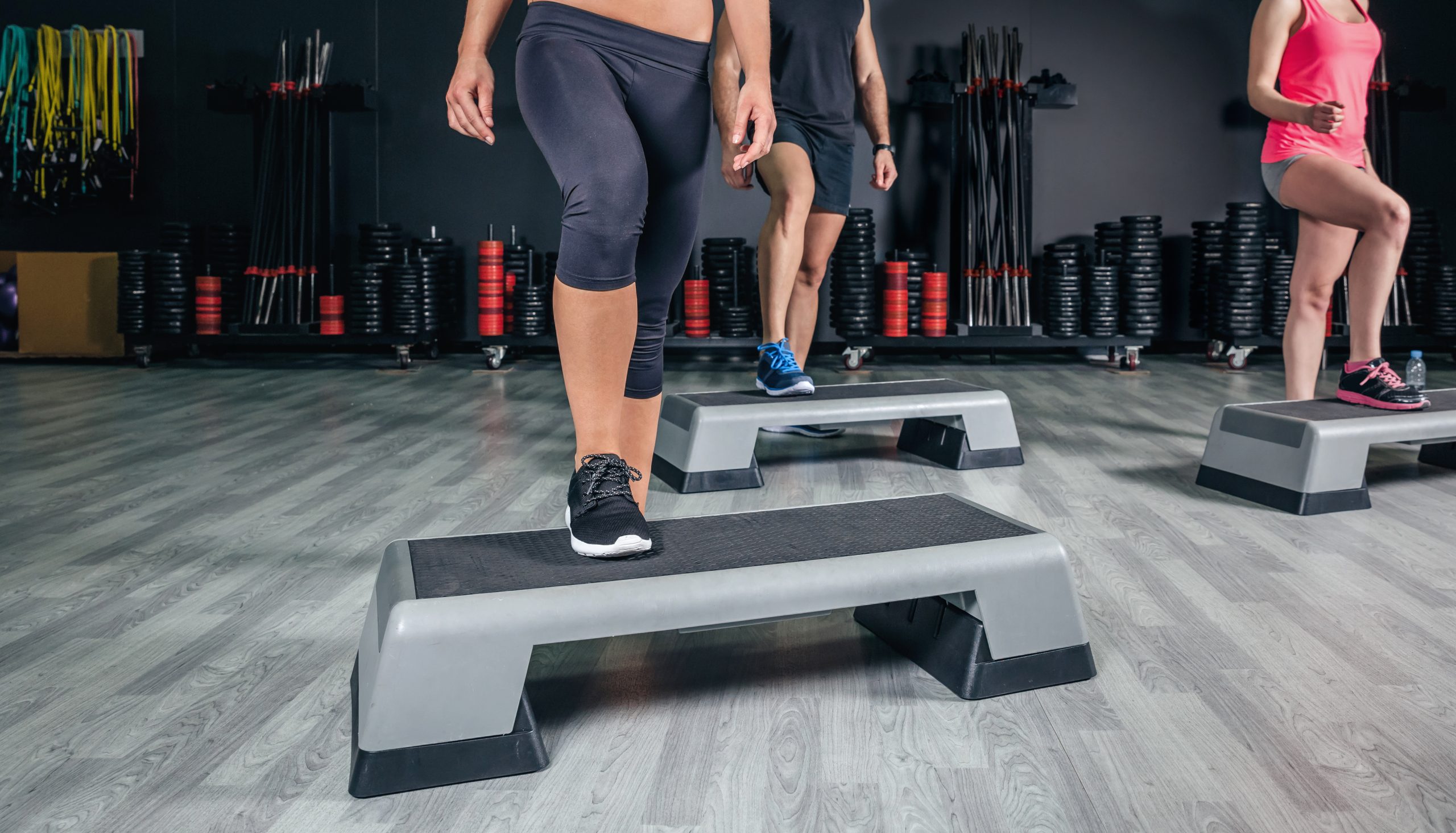
5. Push-up
Start by lying on your stomach with your feet shoulder-width apart. Bring your hands directly under your shoulders. Keeping your back straight and core tight, push your body weight up on your toes until your elbows are extended but not locked. Now, slowly lower yourself back to the ground. Then, return to your starting position and repeat.
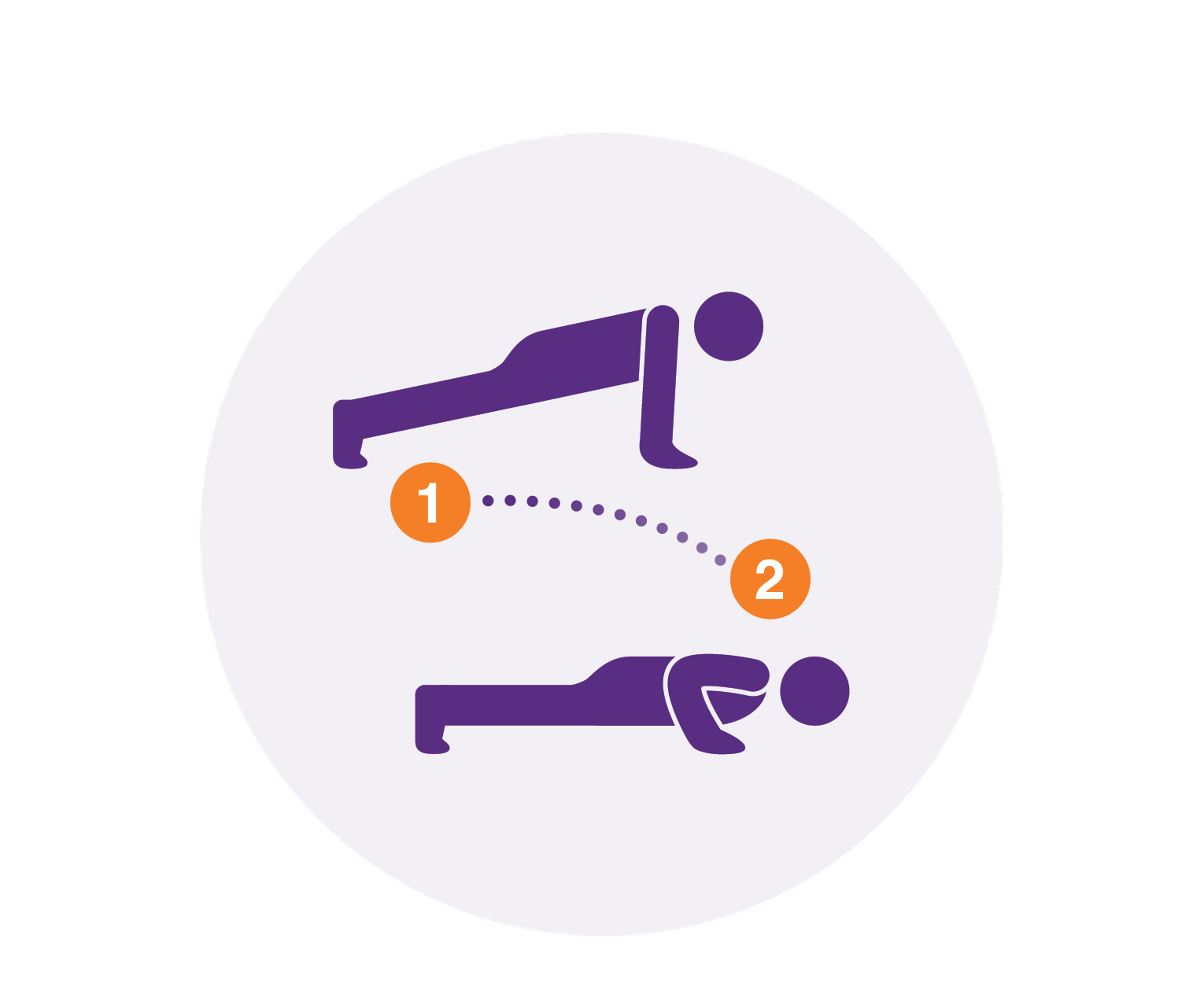
Alternative exercise: Wall push-up
Stand facing the wall with your feet hip-width apart. Place your hands on the wall beneath your shoulders, keeping your arms extended without locking your elbows.
With control, lean your body toward the wall as far as you can go, keeping your elbows pointing down. Then, with your back straight, push powerfully back until your arms are extended but not locked.
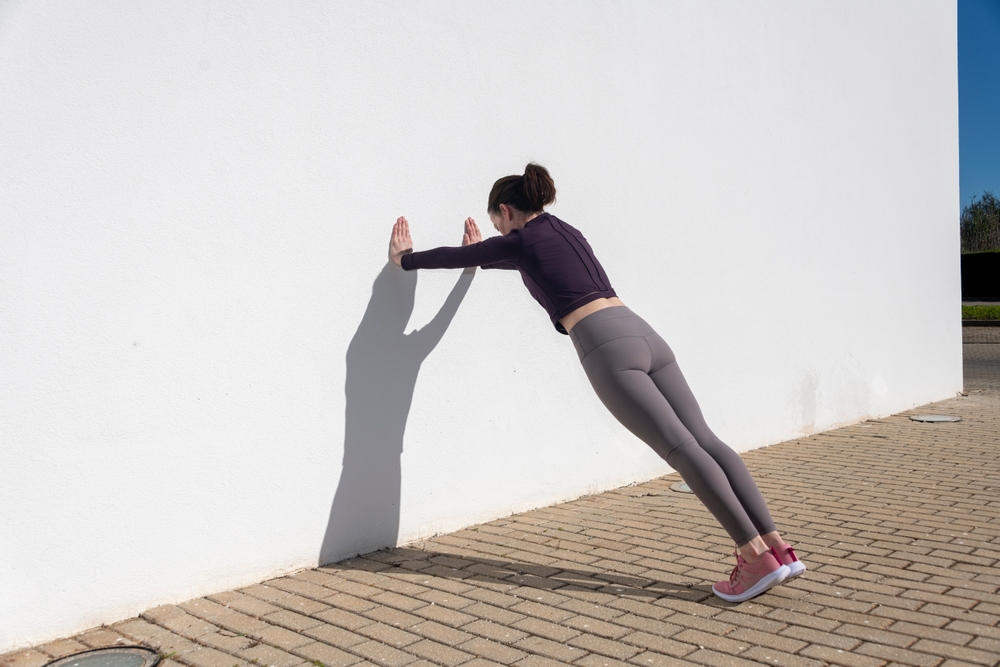
Make way for our Make Room to Move Challenge: January 12 – 31, 2026!
To help you make room to get active in the new year, we’ve partnered with Optimity to bring you our Make Room to Move Challenge on the free Optimity app! To participate, download or open the app, pre-enroll by January 11 at 11:59 p.m. PT for your chance to win one of three $100 EverythingCard gift cards that you can use at over 150 brands, then track your “move minutes” within the app from January 12 to 31 for your chance to win EverythingCard gift cards of up to $500 in value!
Click or tap here to learn more and pre-enroll in the Challenge.


